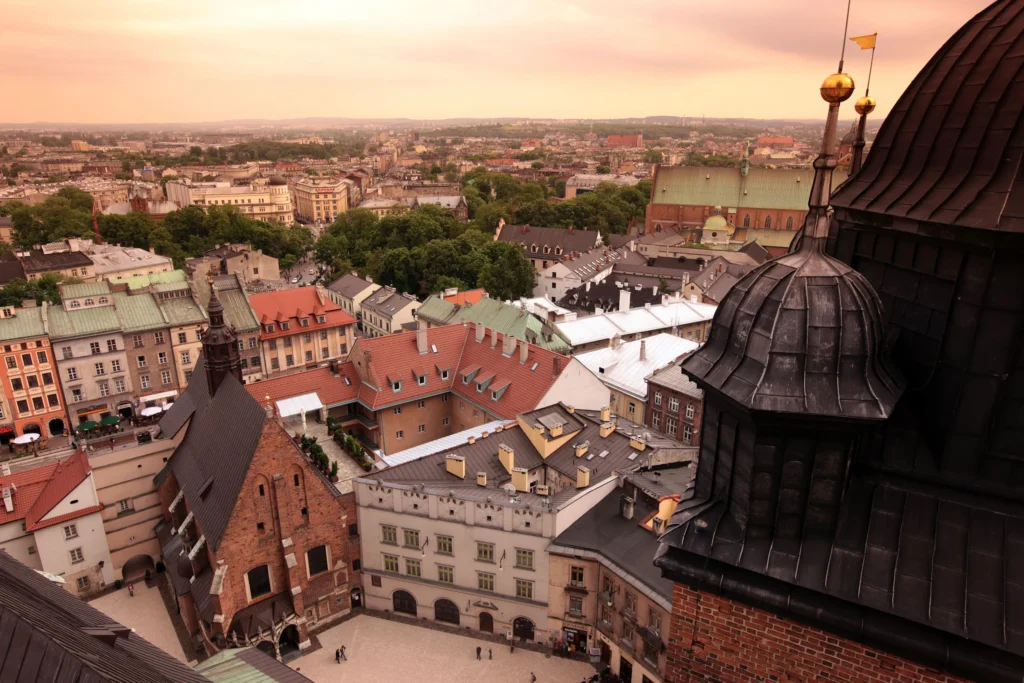Mysterious and captivating, Eastern Europe harbors some of the continent’s most alluring and stunning urban gems. Ideal for adventurous explorers seeking respite from the bustling crowds of Western European metropolises like London, Paris, and Rome, venturing into Eastern Europe’s finest cities often means encountering fewer tourists and enjoying greater bang for your buck. Embarking on a journey through Eastern Europe unveils a tapestry of ancient and modern history, rich culture, breathtaking scenery, and a touch of raw authenticity. From the medieval fortifications of Dubrovnik nestled along Croatia’s Dalmatian Coast, boasting sun-kissed beaches and azure waters rivaling those of Italy’s Amalfi Coast or Greece, to the cobblestone lanes, majestic castles, and whimsical bridges of Prague, one of the region’s most venerable and beloved cities, the allure of Eastern Europe knows no bounds.
Moreover, emerging destinations such as Mostar in Bosnia, with its picturesque old town, and Skopje in North Macedonia, adorned with grandiose sculptures and immaculate streets, beckon travelers to expand their horizons and enrich their itineraries.
While the delineation of Eastern Europe may be nebulous, for the purposes of this compilation, we have included countries classified as such by the United Nations.
1. Dubrovnik, Croatia

The moment you step into Dubrovnik, you’ll be captivated. Its allure is truly incomparable. Nestled along Croatia’s Dalmatian coast, this fortified city boasts an enchanting Old Town straight out of a fairytale. Despite its soaring popularity over the past decade, Dubrovnik can sometimes feel overwhelmingly crowded, particularly when cruise ships pull in. Nevertheless, overlooking the throngs, Dubrovnik is a must-visit destination in Eastern Europe; you simply can’t afford to miss it.
But Dubrovnik isn’t just confined within its ancient walls; there’s a whole world to explore beyond. Along the Adriatic shoreline, you’ll discover a mosaic of sandy and pebbled beaches kissed by the translucent azure waters, inviting enough for a dip. Banje Beach, mere steps from Old Town, serves as a perfect starting point for your seaside adventures.
2. Prague, Czech Republic
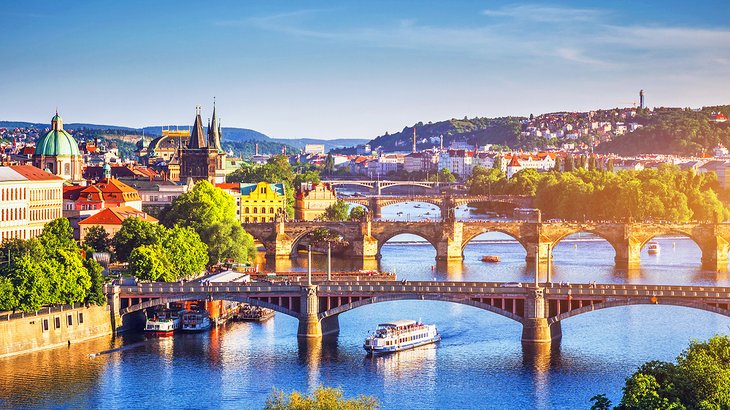
Nestled by the sea, this locale serves as an idyllic launchpad for adventures, inviting travelers to embark on day excursions and island adventures. Ferries ply their trade to the enchanting Elafiti Islands, where charming cafes, inviting eateries with outdoor seating, and hidden sea caverns beckon exploration.
Rooted in a rich history tracing back to the 7th century, Dubrovnik boasts an array of captivating historical landmarks. From the majestic city gates to the bustling Stradun promenade, and the venerable Rector’s Palace housing the Cultural Historical Museum, the city’s allure lies in its timeless architectural treasures.
3. Krakow, Poland

Krakow, the medieval capital of Poland, still exudes its regal charm today. Unlike many Polish cities ravaged by World War II, Krakow emerged unscathed, preserving its architectural marvels—a mesmerizing fusion of Romanesque, Gothic, and Art Nouveau styles.
Among these treasures are the majestic city walls, the iconic St. Florian’s Gate, the breathtaking St. Mary’s Basilica with the world’s largest Gothic altarpiece, and the imposing Wawel Castle.
For both history enthusiasts and cinema aficionados, Krakow holds special significance as a filming location for the Oscar-winning movie, Schindler’s List. The original enamel factory of Oskar Schindler, now transformed into two museums, houses relics from the film set, including Schindler’s own desk. Exploring Krakow’s former Jewish district unveils remnants of the Ghetto Wall and numerous filming spots, offering visitors a poignant journey through history and cinema alike.
4. Budapest, Hungary
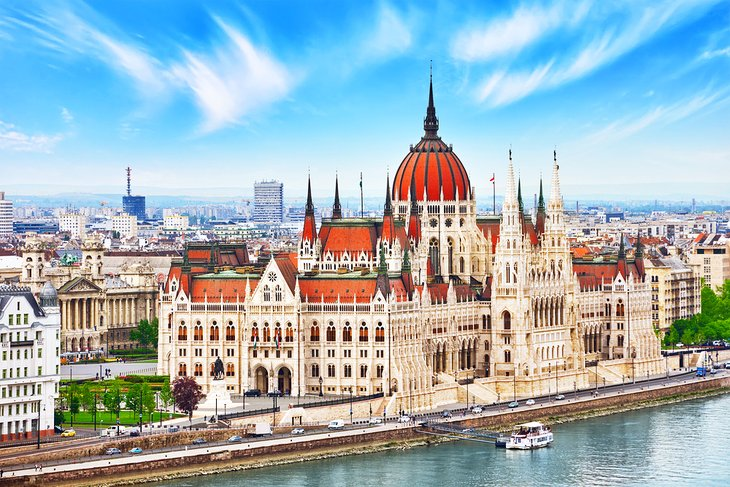
With an awe-inspiring skyline and an abundance of historical and cultural landmarks, the allure of the capital city is undeniable. Referred to as the “Pearl of the Danube,” Budapest tantalizes visitors with its exquisite cuisine and a storied past infused with Roman and Turkish influences, vividly manifested in its renowned thermal baths, notably the beloved Rudas and Szechenyi baths, emblematic of Hungarian tradition.
The most captivating district in Budapest is undoubtedly Castle Hill, a majestic limestone expanse commanding a panoramic view of the Danube. Here, one can marvel at iconic landmarks such as the 13th-century Buda Castle, its enigmatic underground labyrinth nestled within the intricate cave network, Trinity Square housing a subterranean museum chronicling a WWII hospital and a nuclear shelter, and the illustrious Széchenyi National Library.
5. Bucharest, Romania
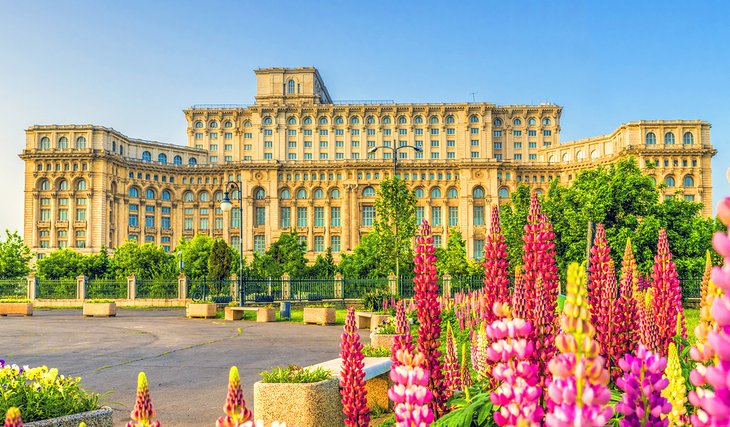
Romania stands out as one of Europe’s most budget-friendly destinations, with Bucharest offering ample opportunities for savings. Public transportation remains economical, budget accommodations abound, and a plethora of city highlights, such as leisurely strolls down Calea Victoriei or unwinding in the historic Cişmigiu Gardens, come at little to no expense.
At the heart of Bucharest lies its enchanting Old Town, a labyrinth of 15th-century architecture adorned with quaint cafés, charming eateries, and artisanal boutiques showcasing traditional crafts and culinary delights.
Moreover, Bucharest’s architectural landscape captivates with its grandeur and intricacy. From the imposing Palace of the Parliament to the Byzantine-inspired Stavropoleos Church and the majestic Romanian Athenaeum, home to the renowned George Enescu Philharmonic Orchestra, the city boasts a tapestry of architectural marvels waiting to be explored.
6. Tallinn, Estonia
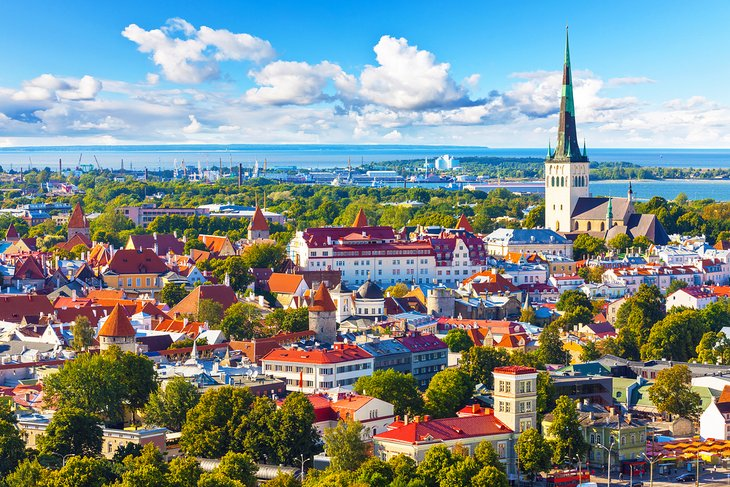
Nestled along the coastline, where the azure waters of the Gulf of Finland stretch out, Tallinn effortlessly blends the essence of antiquity with contemporary allure. In recent years, Estonia has blossomed into a sanctuary for innovators, a transformation vividly mirrored in Tallinn’s bustling commercial hub. Here, amidst chic boutiques and eclectic eateries, the pulse of entrepreneurial spirit resonates.
Compact yet brimming with cultural richness, Tallinn stands as one of Eastern Europe’s most condensed capitals, ensuring that the awe-inspiring Old Town is never more than a leisurely 15-minute stroll away. This UNESCO-designated gem, encircled by ancient fortifications, beckons with its labyrinthine lanes, Gothic splendor embodied in the Town Hall, majestic spires, and quaint cafes offering respite for weary wanderers.
Beyond the historic core, a tapestry of experiences unfolds, inviting exploration. From the maritime wonders of Lennusadam Seaplane Harbour Museum to the rosy hues of Toompea Castle, the ornate grandeur of Aleksander Nevski Cathedral, and a myriad of intimate galleries and museums, Tallinn promises an enriching journey through time and culture.
7. Mostar, Bosnia
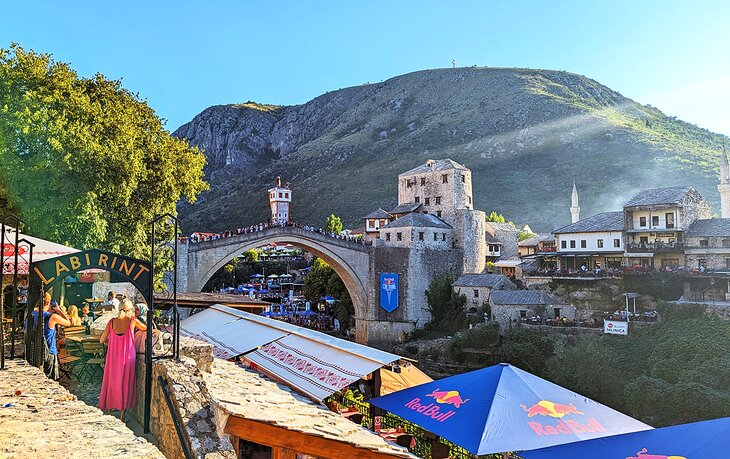
With its iconic Ottoman-era bridge, meandering blue-green river, quaint cobblestone streets, and striking Islamic architecture, Mostar stands as an enchanting jewel nestled in Eastern Europe. A mere 2.5-hour drive from Dubrovnik, Croatia, it’s readily accessible by road, though lacking rail or air connections.
While some still perceive Mostar through the lens of its tumultuous past during the Bosnian Wars of the mid-1990s, it has been a haven of peace for over 25 years. Today, it emerges as a secure and captivating destination, where hospitality abounds, and amenities come at a fraction of the cost compared to neighboring Croatia.
Compact in size, Mostar invites leisurely exploration on foot within a single day. Its crowning glory, the Stari Most (Old Bridge), beckons visitors with its timeless allure. For those seeking a dash of thrill, the opportunity to partake in the revered Mostar Bridge Jump awaits, courtesy of the nearby dive school stationed at the bridge’s right flank.
8. Kotor, Montenegro
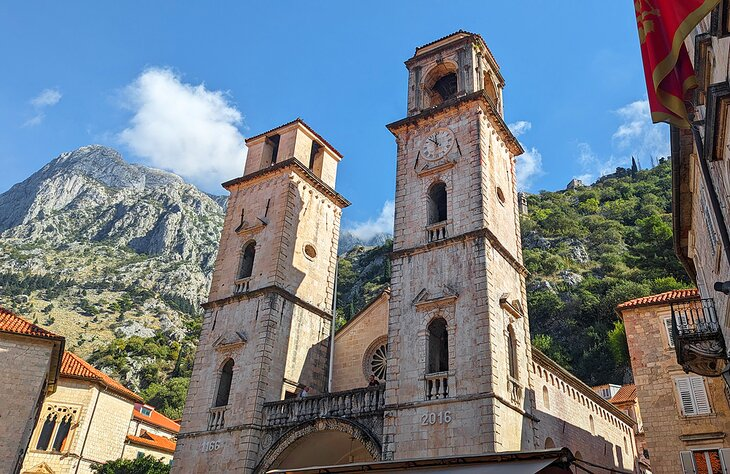
Perched delicately on the brink of a sunken river gorge in the Adriatic, often likened to Europe’s southernmost fjord, Kotor stands as a beacon of Eastern European charm. Its medieval heart, reminiscent of Dubrovnik, lies ensconced within towering Venetian fortifications, yet it boasts a quieter ambiance, spared from the throngs save for the occasional influx of cruise ship tourists. Amidst the embrace of majestic mountains and a picturesque bay, Kotor exudes a sense of serene grandeur.
Meander through the UNESCO-designated Old Town, a time capsule dating back to 1420, where every cobblestone whispers tales of antiquity. Despite its compact size, this enclave offers a wealth of wonders: from quaint squares to labyrinthine alleys adorned with an eclectic array of boutiques, cafes, and eateries. Dominating the skyline is the 12th-century Cathedral of St. Tryphon, its ancient walls adorned with 14th-century frescoes, inviting visitors to step into a bygone era.
9. Belgrade, Serbia

Belgrade may not boast the pristine beauty often associated with Eastern European cities, yet its unique grit lends it an undeniable allure. Serbia’s historic capital beckons exploration, inviting visitors to delve beneath its surface and discover its distinctive charm. Serving as a gateway to Serbia and the broader Balkans region, Belgrade offers seamless access to a rich tapestry of cultures and landscapes.
Diverse architectural styles punctuate the cityscape, from the elegant lines of Art Deco to the ornate flourishes of Baroque and Art Nouveau, alongside striking modernist structures. While landmarks like the Presidential Palace and Town Hall showcase the city’s grandeur, the Kneza Mihaila pedestrian street offers an immersive journey through history, with its eclectic blend of converted historical buildings housing galleries, boutiques, and inviting cafes.
10. Riga, Latvia
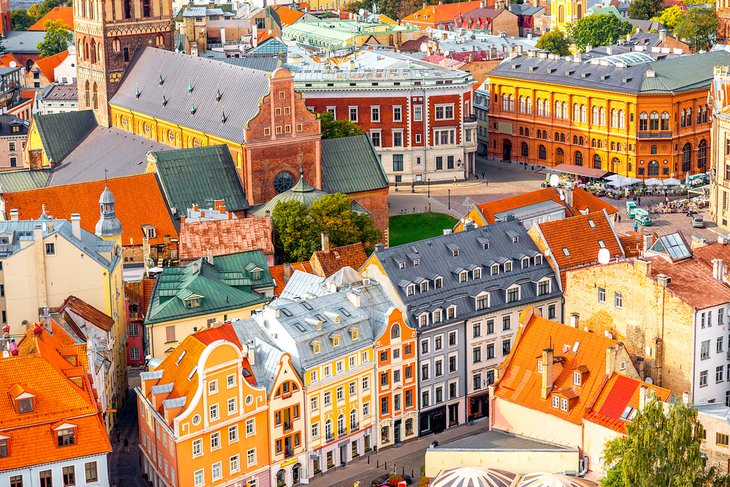
Riga, a compact gem of a city, beckons for a weekend getaway ripe with exploration. With numerous budget airlines making pitstops here, it serves as a convenient gateway to uncovering the vibrant cultural hub of the Baltics. And don’t rush off just yet; before venturing further into Latvia’s offerings, take in the stunning Baltic Sea coastline, conveniently accessible via quick train ride to the Jurmala beach resort, a mere 20 minutes from the heart of Riga.
In the capital’s charming streets, a tapestry of diverse influences intertwines, reflected in the eclectic architectural tapestry of the Old Town. It’s a visual feast that mirrors Latvia’s rich heritage, inviting you to delve into its multicultural essence.
11. Skopje, North Macedonia
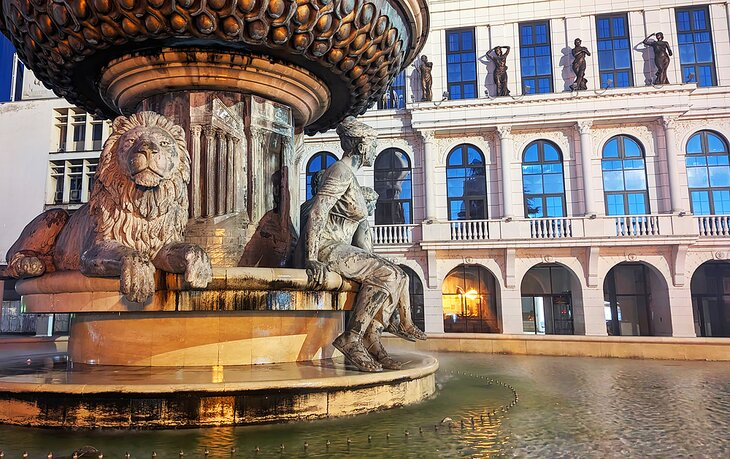
Skopje stands out distinctly among Eastern European cities, presenting itself as a whimsical marvel that might make you question reality itself. Its monuments, towering and often bathed in vibrant hues of pink and purple, defy the conventional, with the Alexander the Great statue in Macedonia Square towering at an impressive 22 meters.
Despite its relatively small size, Skopje offers a plethora of attractions that can be explored on foot within a few hours. Particularly enchanting is the city’s nighttime ambiance, when illuminated monuments, fountains, and buildings cast a spellbinding charm that’s equally captivating during the day.
With 284 statues scattered across its landscape, Skopje boasts not only grandiose neo-classical structures but also a continual process of reinvention. The city seems to perpetually refresh itself, investing over 560 million Euros to maintain its unparalleled aesthetic.
12. Bratislava, Slovakia
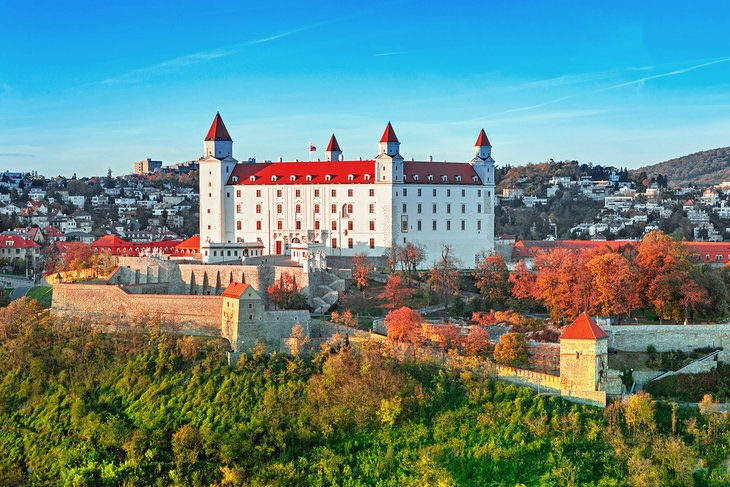
Bratislava often serves as a convenient pit stop en route to the picturesque national parks speckling the country. However, don’t underestimate this modest city – it packs a punch with its rich tapestry of history, culture, and culinary delights.
Indeed, Bratislava beckons as an ideal urban getaway, boasting a lively epicurean scene, a distinctive café culture, and an array of recreational pursuits suitable for every palate and age.
For the adventurous spirit, the city embraces cycling with open arms, offering readily available bike rentals for traversing its themed bike circuits.
When it comes to architectural marvels, Bratislava Castle reigns supreme, perched majestically atop a hill, its commanding presence visible from virtually every corner of the city. Ascend the nearly 50-meter castle tower for an unparalleled panoramic vista of Bratislava.
13. Sofia, Bulgaria
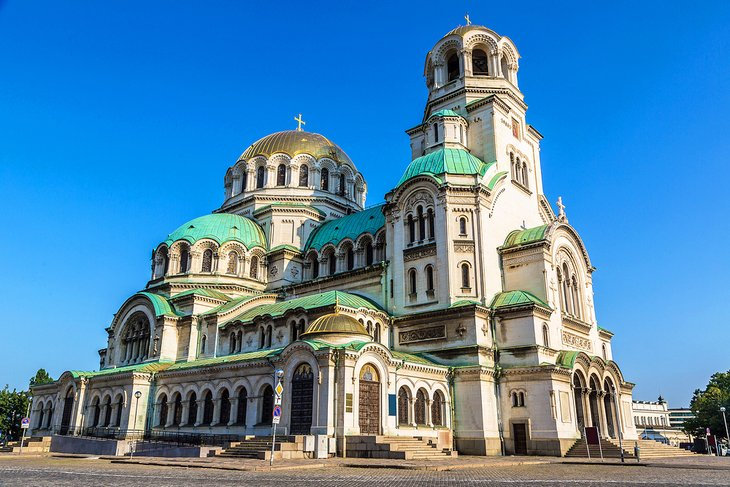
Sofia’s rich tapestry of history and architecture bears the indelible marks of illustrious civilizations, notably the Greeks, Romans, and Ottomans. The city boasts a remarkable blend of styles epitomized by iconic landmarks such as the awe-inspiring Neo-Byzantine marvel, Saint Aleksandar Nevski Cathedral. As the premier attraction and one of Europe’s grandest Orthodox edifices, it stands as a testament to Sofia’s diverse cultural heritage.
Beyond the cathedral, Sofia is adorned with a treasure trove of historical gems. Among them is the Boyana Church Museum, dating back to the 10th century, adorned with exquisite frescoes that whisper tales of yore. The ancient Sveti Georgi rotunda and the erstwhile Turkish Mineral Baths, now home to the Sofia History Museum, further enrich the cityscape with their storied pasts.
No visit to Sofia is complete without indulging in the hearty flavors of Balkan cuisine and savoring the refreshing local mineral spring water, available at numerous fountains throughout the city. For those seeking adventure, the scenic Vitosha Mountain, a mere 30-minute drive away, beckons with opportunities for hiking and skiing, promising unforgettable experiences regardless of the season.
14. Český Krumlov, Czech Republic
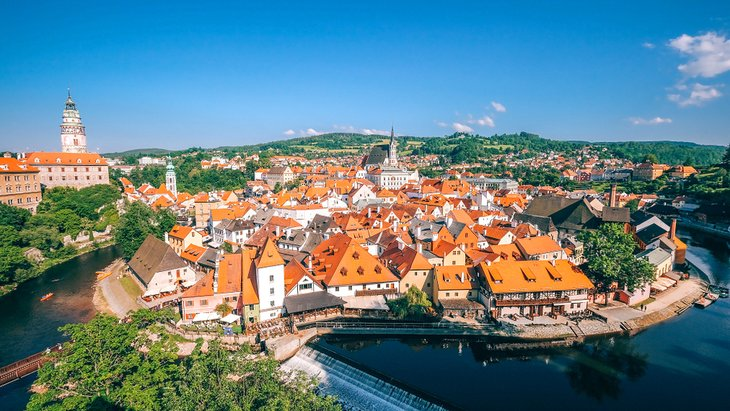
If you’ve been captivated by Prague’s crimson rooftops and winding cobblestone lanes, then Český Krumlov awaits as the perfect encore.
This quaint medieval town, far more intimate than its bustling counterpart, transports you to an era long past. Its UNESCO-protected historic core envelops a 13th-century castle, while meandering through its labyrinthine alleys evokes a sensation straight out of a storybook. Take your time exploring these medieval pathways, where tucked-away boutiques offer treasures of art and handcrafted souvenirs.
Perched along the meandering Vltava river, the castle commands attention, inviting adventurers to indulge in kayaking or rafting along its serene waters. Ascend the castle tower for unparalleled panoramic vistas of the picturesque town, then delve deeper with guided tours unveiling the castle’s inner sanctums. Don’t miss the chance to witness one of Europe’s rare surviving Baroque Castle Theaters.
15. Vilnius, Lithuania
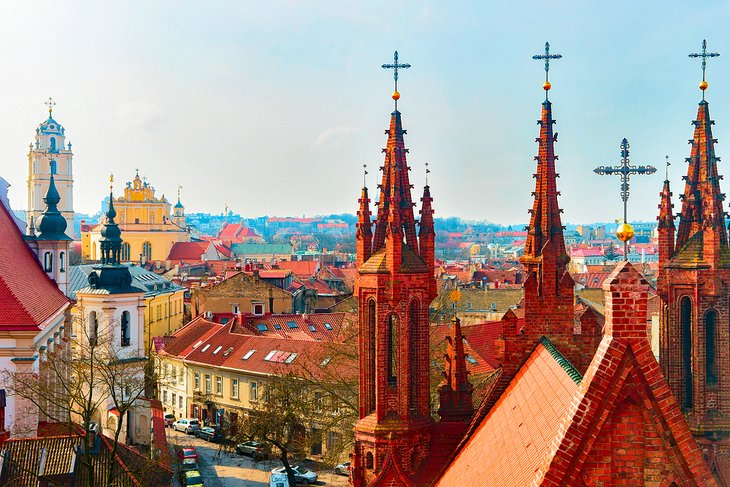
Vilnius, the capital of Lithuania, boasts a UNESCO-recognized Old Town, delectable cuisine, and chic neighborhoods, rendering it an enticing choice for travelers seeking an authentic experience. Its compact layout facilitates exploration on foot, ensuring that even a brief visit allows for ample sightseeing.
Undoubtedly, the highlight is the 14th-century Trakai Castle, nestled amidst the serene waters of Lake Galve. Accessible via a charming pedestrian bridge, this fortress-turned-museum offers insightful tours. In winter, the frozen lake transforms into a picturesque skating rink, offering unique photo opportunities.
Kick off your day with freshly baked pastries from the historic Hales Market, then wander through the iconic Gate of Dawn before delving into the poignant history of Vilnius at the Museum of Occupations and Freedom Fights, shedding light on the city’s resilience in the face of adversity.
